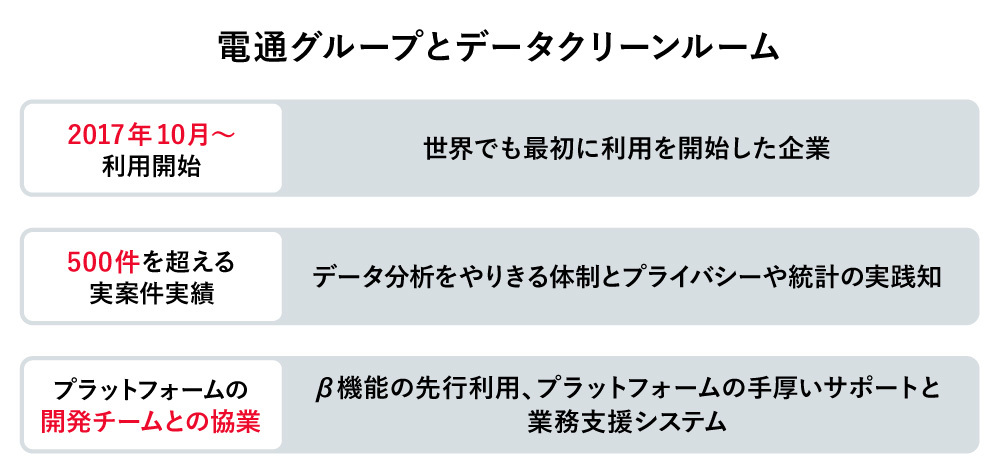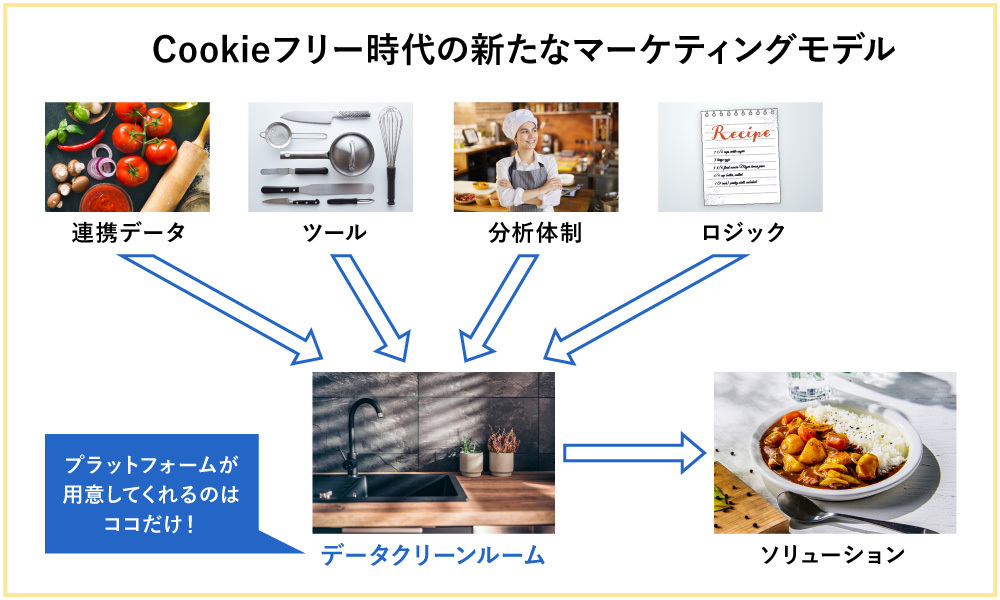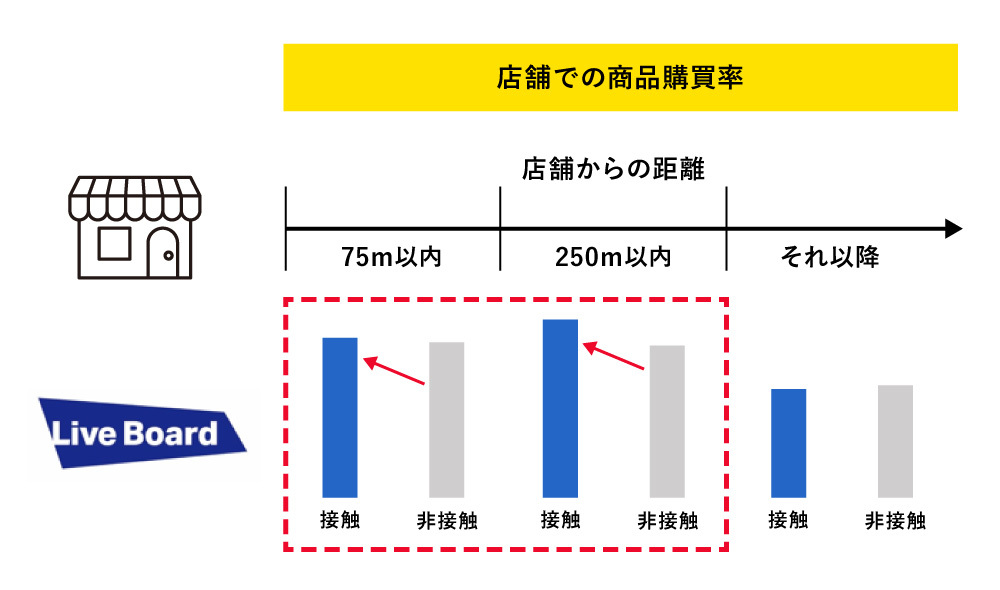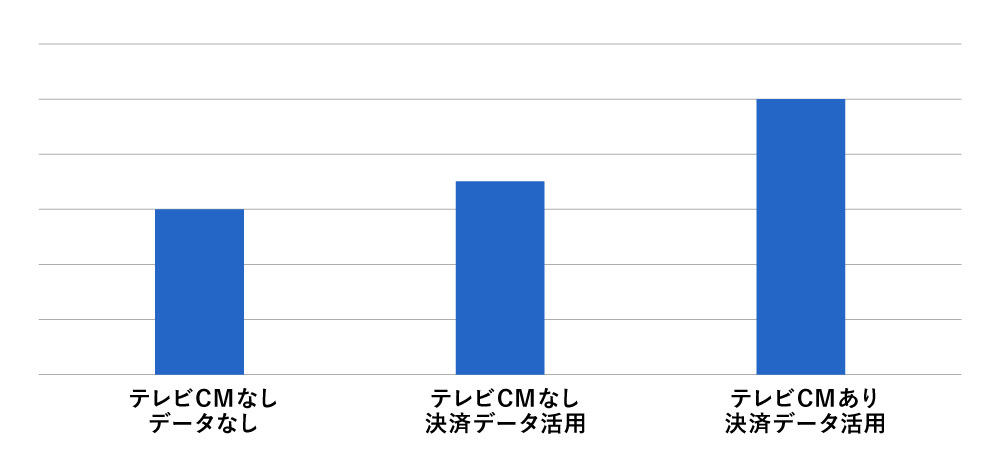Note: This website was automatically translated, so some terms or nuances may not be completely accurate.
The Potential and Applications of Data Clean Rooms
How will companies confront the "cookie-free era"? How will marketing and digital advertising change?
This series, brought to you by Treasure Data—provider of CDPs (Customer Data Platforms) to businesses—and the Dentsu Group, shares insights on corporate DX.
This installment focuses on "data clean rooms" – a solution born to balance privacy protection with solving marketing challenges.
Continuing from last time, Dentsu Inc.'s Shun Maekawa delves deeper into the current state of data clean rooms.
<Table of Contents>
▼ "Data Clean Rooms" Evolving the "Individual-Level" Approach
▼Enabling Advanced Marketing in a Cookie-Free World Through Data Clean Room Utilization
▼What is the solution to the digital promotion challenge of "Balancing Scale and Cost"?
The "Data Clean Room" Evolving the Individual-Level Approach
──Last time, we discussed the "New Trends in Personal Information and Privacy Protection." This time, I'd like to hear more details about data clean rooms.
Maekawa: The three approaches I introduced last time for the cookie-free era—
- "Adopting methods that aren't person-based to begin with"
- "Developing methods targeting groups"
- "Maintaining a person-based approach based on appropriate consent"
As the Dentsu Group, we are particularly focused on maintaining the last approach, the "individual-level" method. The key point is "obtaining user consent for data usage."
Third-party cookies enabled large-scale data collection by capturing data during ad display, but it's also true that data could sometimes circulate with ambiguous prior consent for its use. Furthermore, digital marketing strategies to date have relied heavily on these third-party cookies.
However, in the cookie-free era, I believe only data linked to IDs for which clear explanations of "how it will be used" are provided and prior consent is obtained will be utilized.
The key condition for an ID to be effectively utilized in marketing is that it must be "contactable by the individual and capable of connecting to various external sources." In other words, the crucial factor is whether consent can be obtained in a form that links to email addresses, phone numbers, or advertising identifiers.
──So, linking with contactable IDs and obtaining user consent is paramount. Where do such IDs gather?
Maekawa: For users to entrust their email addresses or phone numbers to a company, a sense of "reasonableness" and the "user benefits" gained in exchange for marketing use are crucial. Platform companies typically possess many IDs that meet these two points and can be utilized for marketing.
This includes mobile carriers, of course, but also apps and services related to purchasing, e-commerce, and payment/points systems that require customer support for delivery, returns, etc. Additionally, there are digital platforms like social networks and search portals. These services are used for communication between friends and support a more comfortable real life through social logins and personalization. Consequently, users feel justified in providing their email addresses or phone numbers, and they also receive user benefits in return.
──How can "pre-approved IDs" be handled?
Maekawa: It depends on the scope and content of consent obtained from users. It hinges on how companies use the data—what they use it for and how—and on designing commensurate benefits or service compensation. It also varies by user.
For example, users might say: "I'm okay with being targeted if I get points," "I'm fine with my favorite service using my data for analysis," or "I'll allow data sharing externally if it reduces irrelevant ads." Various forms are possible.
Note that saying "already consented" might imply that once consent is obtained, the data can be used freely. However, the ownership of the data always remains with the user; the company is merely in a position of "holding it in trust." Companies must continuously provide users with benefits for entrusting them with their data. Simultaneously, I believe users will increasingly have opportunities to be aware of "how their data is being utilized."
In this sense, corporate communications to users, including advertising, must increasingly be "just-right offers" for each individual user—welcome content delivered at welcome times. A dialogue-like process of listening to, understanding, and continuously improving based on individual user responses will become increasingly vital.
To build this dialogue process, it is necessary to integrate data from various touchpoints: where customers learn about and understand/relate to products/services through advertising via TV or digital channels, and where they actually purchase or contract for those products/services. Particularly in recent times, integrating this data securely within systems that preserve privacy, and of course with user consent, becomes a critical issue.
――So, a data clean room is where you can combine the data held by the platform with the proprietary data held by each client company. Could you explain its concept again?
Maekawa: A data clean room refers to a privacy-protected cloud environment provided by the platform, enabling the integration and analysis of platform data alongside non-platform data.
Specifically, it integrates the platform's impression and attribute data with various data held by client companies and advertising agencies, creating a foundation for executing continuous marketing PDCA cycles. (Figure 1)
Figure 1

Note that the data clean room itself is owned and provided externally by each platform. Advertising agencies, including Dentsu Inc., and client companies contract to use it.
――What are the benefits for client companies using a data clean room?
Maekawa: Capabilities vary by platform, but compared to traditional third-party DMPs based on cookies, they offer the following key features. (Figure 2)
Figure 2  First, data does not disappear over time.
First, data does not disappear over time.
In this era of the "new normal," it's increasingly important not just to sell products to users and end there, but to cultivate them into long-term fans. "Becoming a brand fan" doesn't happen suddenly; it often comes after consistent, daily communication, leading to a point where users realize they've grown to like the brand's worldview.
However, traditional third-party DMPs couldn't actually analyze the effects of this long-term communication accumulation. This is because cookie data typically expires after about three months.
In contrast, a data clean room, which allows long-term data visibility, can reveal the communication journey that ultimately turned users into brand fans. This insight enables the development of more user-pleasing communication strategies and the accumulation of knowledge for building a fanbase.
Of course, just because the ID remains constant doesn't mean data is accumulated aimlessly or that individuals can be identified. Many data clean rooms implement privacy-conscious features and operations, such as automatically deleting data after a certain period or flagging calculations with insufficient sample sizes as errors.
Another benefit of data clean rooms is the ability to "link" IDs. Some client companies manage data like "app purchase data," "browser purchase data," and "store purchase data" separately within their organization. Even if they possess various data points, the inability to integrate them prevents cross-channel user analysis and evaluation of media strategies.
Within a data clean room, diverse data can be consolidated under a single ID. This integration is possible not only with internal data but also with external IDs.
For example, a key strength of the data clean room is its ability to link with external loyalty cards that hold IDs tied to email addresses or phone numbers. This enables analysis of "when, who, and through which path purchases were made," primarily for products bought at convenience stores and drugstores, at a scale of tens of millions of IDs. This could be a significant advantage for companies unable to collect such purchase data internally.
Leveraging data clean rooms enables advanced marketing in a cookie-free environment
──Many clients believe that not using cookies means they can no longer achieve the same level of precision in targeting or effectiveness measurement as before. But actually, it enables more advanced digital marketing, right?
Maekawa: Yes. At Dentsu Group, we believe marketing leveraging the Data Clean Room platform will become increasingly important. We refer to the scope of data for which we have obtained permission for linkage as an "economic sphere." We conduct the process of understanding customer structure, tailoring approaches, verification, and improvement within the Data Clean Room. We then vertically integrate across platforms using platform IDs within each economic sphere to drive marketing transformation for companies.
――What can the Dentsu Group contribute to clients when introducing data clean rooms?
Maekawa: To reiterate, the data clean room is a cloud-based platform. We equip it with integrated data, tools, analytical frameworks, and logic to enable advanced analysis and ensure those insights effectively solve client challenges and marketing issues.
Regarding tools, while the data clean room offers high flexibility, its operational complexity increases. The management interface is not generic, and developing "queries" (coding) tailored to the desired analysis is often necessary. Dentsu Group can significantly support clients with these labor-intensive aspects.
Additionally, in terms of analysis and infrastructure, the Dentsu Group employs numerous data scientists skilled in handling data clean rooms. Although data clean rooms have system controls that prevent personal identification, this does not mean "anything goes within that scope." Moving forward, data scientists must correctly understand key points currently debated in the industry regarding privacy protection, as well as the revised Personal Information Protection Law scheduled to take effect in April. Naturally, consideration of whether "advertising and promotional strategies based on analysis results truly enhance the user experience?" is also essential.
Against this backdrop, the Dentsu Group has developed specialized training and development programs for data scientists working with data clean rooms. This enables client companies to introduce and utilize data clean rooms with greater confidence and speed.
Developing the logic is also crucial. We were one of the first companies globally to leverage our strengths as a global agency and begin working on data clean rooms around 2017. We have systematized the queries developed during this time and advanced the construction of logic for statistically correcting biases and predictive/estimation models using regression models.
Figure 3 
Rather than viewing it solely as the Data Clean Room platform, we see it as one (important) component within the broader solution addressing our clients' marketing challenges.
Just as a kitchen provides the foundation where ingredients, cooking utensils, chefs, and recipes come together to make curry, the data clean room foundation enables the integration of linked data, tools, analytical systems, and logic to practice new cookie-free marketing.

What is the solution to the digital promotion challenge of "balancing scale and cost"?
――Could you share current use cases for data clean rooms?
Maekawa: There are various examples, but I'll share one from digital promotions. One appeal of digital promotions is "proof of purchase obtained within the user's natural shopping experience." Consider a campaign like "Buy this product and earn points."
Methods to prove "they bought" include collecting stickers attached to products, scanning QR codes to enter serial numbers, or photographing and sending receipts. These are relatively cumbersome purchase proofs for users. While campaigns using such methods can attract hundreds of thousands of participants, reaching millions becomes difficult.
Therefore, to scale campaigns further, there was a demand for "methods to naturally capture proof of purchase within everyday shopping behavior." One solution emerging is cashless payments, where "users paying via an app" provides proof of purchase.
However, with such natural proof of purchase, users might not even realize it's a campaign, leading to situations where they simply "happened to buy something and got points." This misses the mark of the marketing objective.
Many marketers are interested in nudging customers who weren't planning to buy into actually purchasing and using the product, building loyalty through this accumulation. In this sense, alongside "natural proof of purchase," the know-how for "traffic flow design" – effectively promoting the campaign starting from the sales floor – is crucial.
Therefore, within the data clean room, we analyze data such as "traffic sources," "patterns of retention," and "attributes of purchasers" to inform campaign strategy. Various analyses have validated insights like: "Digital OOH within 250m of the store is effective for driving user purchases" and "Aligning digital ad announcements using payment data with TV commercial airing timing increases click-through rates by 1.8 times."
Figure 5: 

──So the effectiveness of the data clean room has already been verified to a certain extent. Next time, building on these results, we'd like to hear more about specific use cases and anticipated challenges from Kohei Yamamori of Treasure Data and Wataru Tokushige of LINE.
If you are interested in the solution provided through the collaboration between Treasure Data and Dentsu Inc./Dentsu Digital Inc., please feel free to contact us.
[Download Overview Materials Here]
https://www.treasuredata.co.jp/d-dd-td-download/
[Contact Us Here]
https://www.treasuredata.co.jp/dx-engine-contact-us/
Was this article helpful?
Newsletter registration is here
We select and publish important news every day
For inquiries about this article
Back Numbers
Author

Shun Maekawa
Dentsu Inc.
Data Technology Center
As a data analyst, I spearheaded integrated planning and effectiveness measurement for TV and digital media. In 2015, I led the development of STADIA, an integrated marketing platform for TV commercials and digital advertising. Currently, I oversee data alliances with major tech companies—including global digital platform operators, mobile carriers, and device manufacturers—centered around Data Clean Room, a new data infrastructure for the cookie-free era. I secured first place in the #Twitter promote APAC competition for innovative ad systems.




